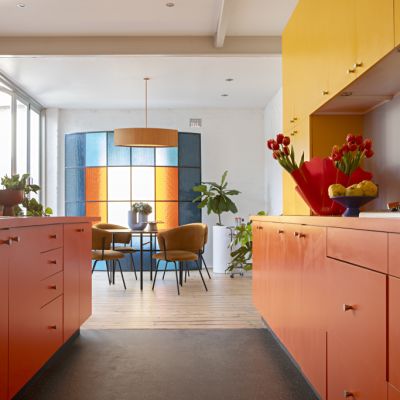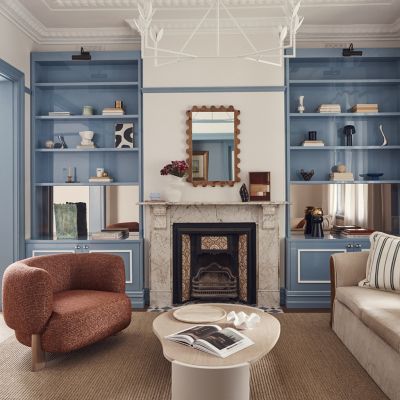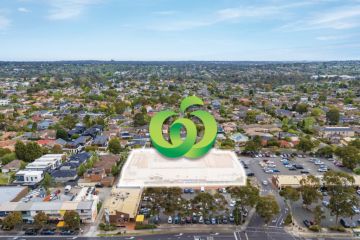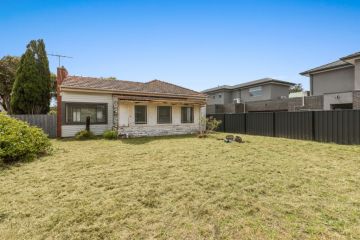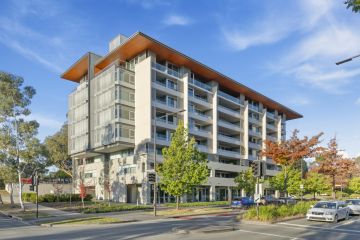The winners of the 2024 Dulux Colour Awards use colour in 'all-encompassing ways'
Brave, clever and precedent-setting were some of the terms used to describe the application of colour in Alexandria House – a top prize winner in the 38th Dulux Colour Awards, announced at the Sydney Opera House last night.
The project by Lachlan Seegers Architect took out both the Australian Grand Prix and the residential interior awards for its “highly original” use of Dulux’s Cumberland Red.
The deep, burnished red was used on the ceiling of the revived 1886 inner-Sydney terrace. Set against the home’s white walls, this created an effect that judge Eva-Marie Prineas described as “like reading the floor plan, only from above”.
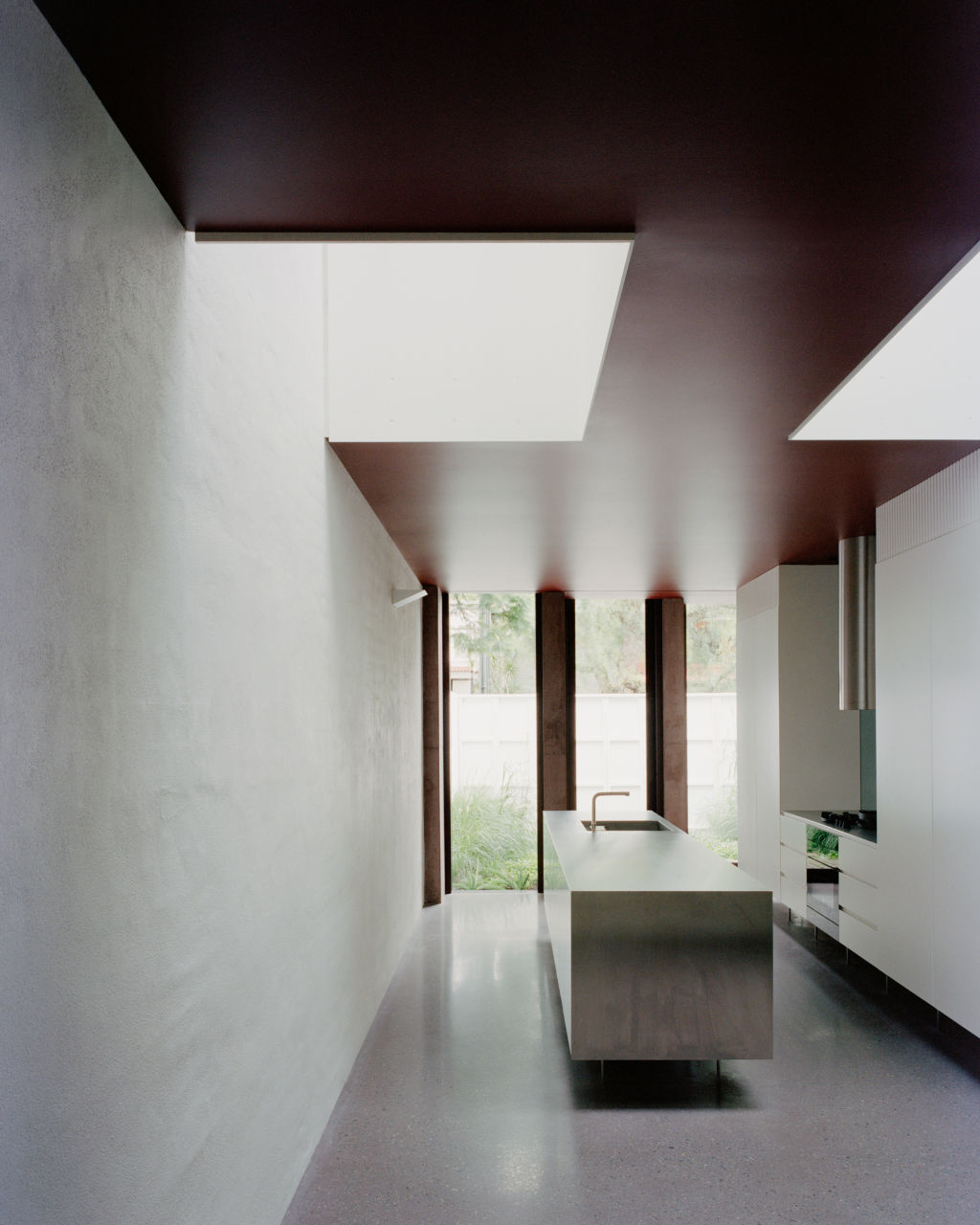
“As an architectural move it is so simple, yet it alters the experience within the interior dramatically, highlighting its geometry, during the day at least,” she says. “At night, the dark ceiling disappears as though there is none there at all.”
The annual awards celebrate the innovative use of colour by Australian and New Zealand designers across seven categories, with 83 finalists selected from a record 527 entries.
Dulux colour and communications manager Andrea Lucena-Orr says colour blocking and saturation were two clear trends to emerge from this year’s winning projects, which span the gamut of residential and commercial design.
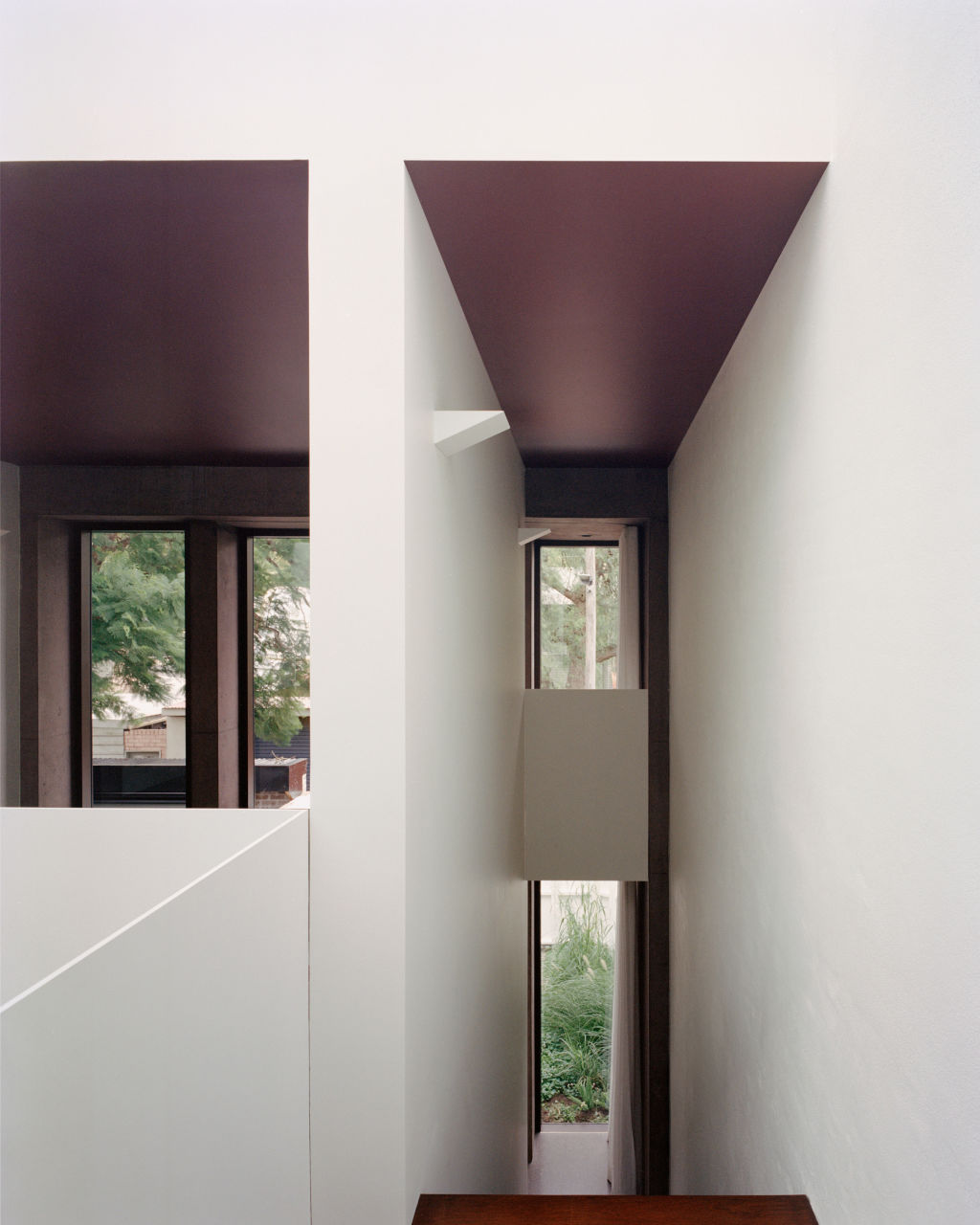
“If there is a dominant theme this year, it is the use of colour in all-encompassing ways, from coating every surface of a room in a single shade to painting an entire building in tonal graduations of one colour,” she says.
Carnival-inspired colours like Dulux’s Pinktone and Harvest Gold were embraced, along with earthy tones like deep rusty reds, dusky blues, warm greys and browns.
These trends were evident in a Surry Hills project by Architect George, which won the award for single residential exterior and was commended in the residential interior category.
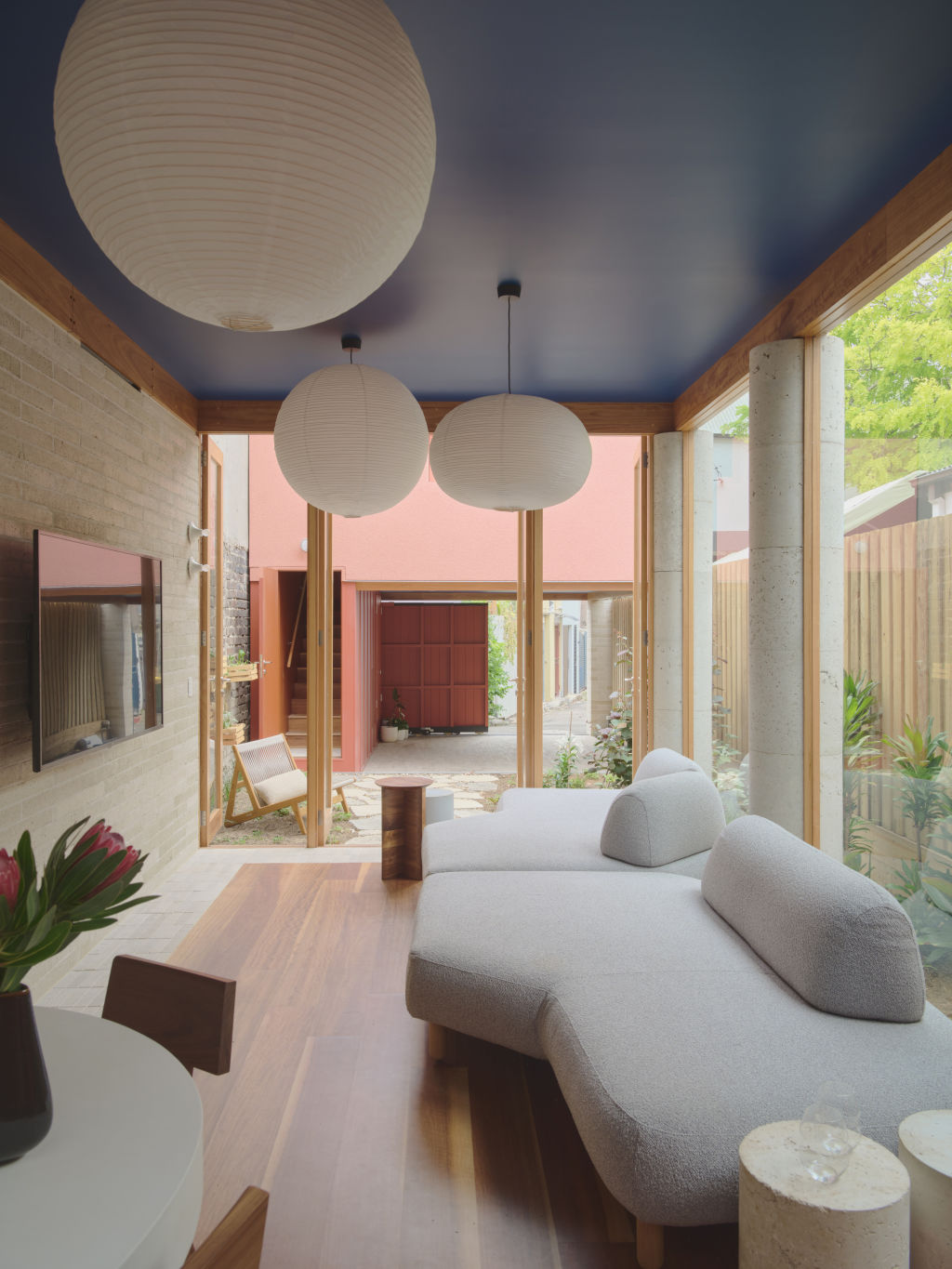
Referencing the palettes of renowned Mexican architect Luis Barragan, the facade of the 1880s terrace was painted in Aerobus blue, while the rear exterior was coated with a rich exotic red. A series of new pink-hued pavilions with night-sky blue ceilings sit in between.
“These two personalities, distinguishing front from back and old from new, simply with their contrasting colours, add so much joy to their respective streetscapes,” says judge Shaun Carter, principal architect and founder at Carter Williamson.
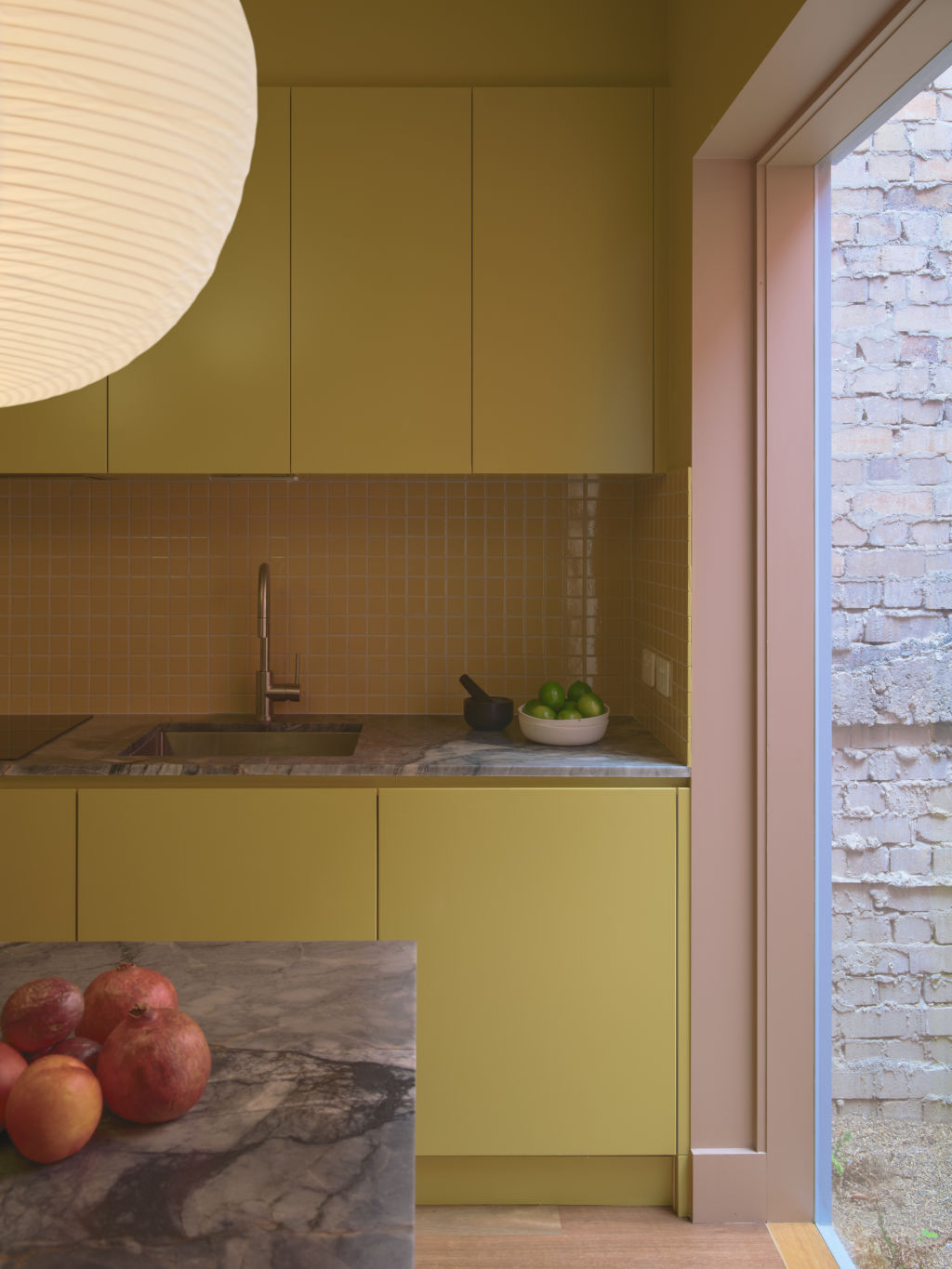
Inside, a neutral brown hue was used for the ceilings, walls, trims and joinery of the common areas and guest bedrooms, creating a “warm, enveloping effect”. Deep blues were used in the private bedroom and bright yellow saturates the kitchen.
Also commended in the residential exterior category was Sunkissed Higgins by Adelaide-based studio RADS, described by the judges as “pure retro joy”.
Located in a small South Australian surfing community, the seaside home “echoes the ombre effect of the setting sun in a graduated series of pastel-pink modular weatherboard cladding” in a “celebration of beach culture”.
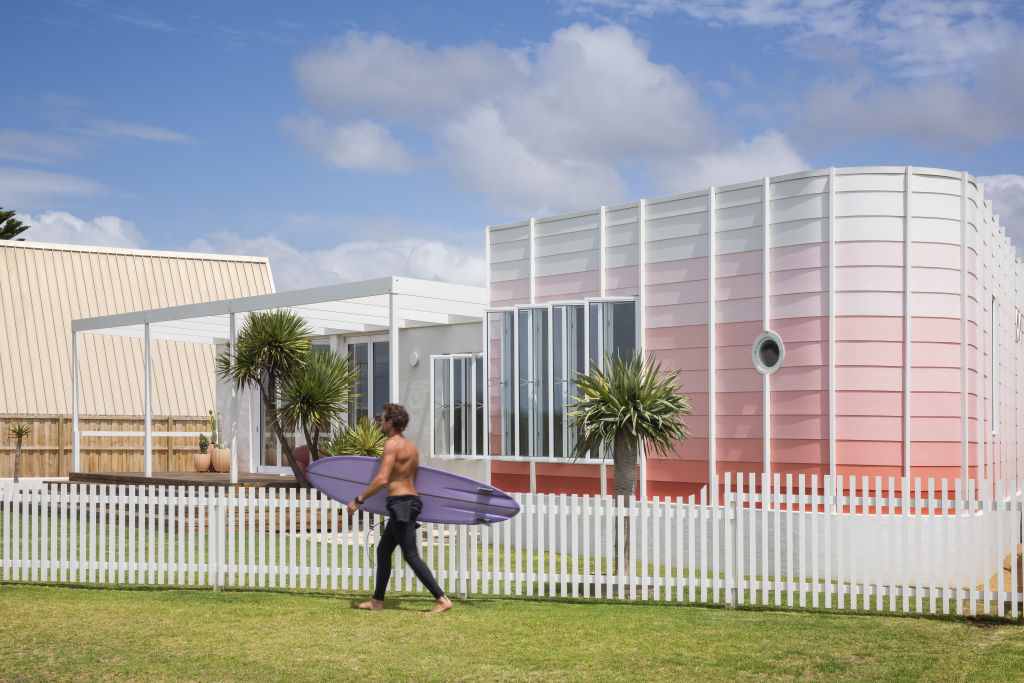
A low-cost housing project by COMMON Architecture + Interiors was named the winner of the New Zealand Grand Prix and commercial and multi-residential exterior awards.
Dubbed Seven Colourful Little Houses, the project brought colour – including dusky blue, sage green, red, orange, silver and off-white – to an outer suburb of Christchurch in New Zealand.
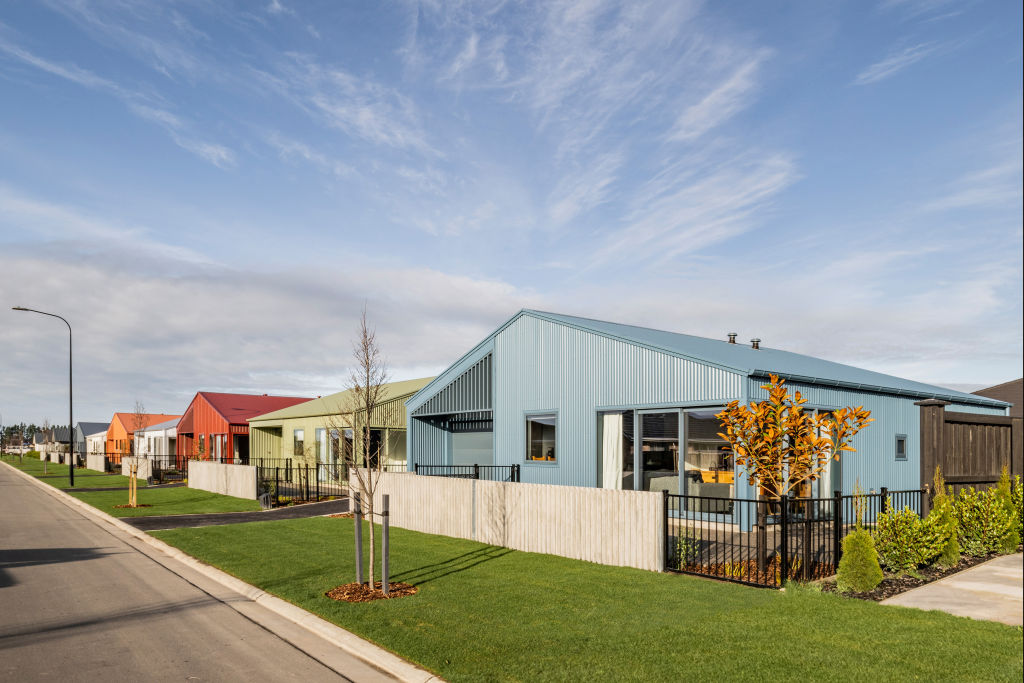
Judge Sarosh Mulla says the modest homes, which sit side by side, “add a street presence that is truly uplifting” and demonstrate a “commitment to reimagining the suburban sprawl”.
“The architects wholeheartedly fulfilled their ambition to use colour to add a sense of harmony and balance to the street elevation and recognise depth, movement and texture as important design elements in the wider suburban context,” he says.
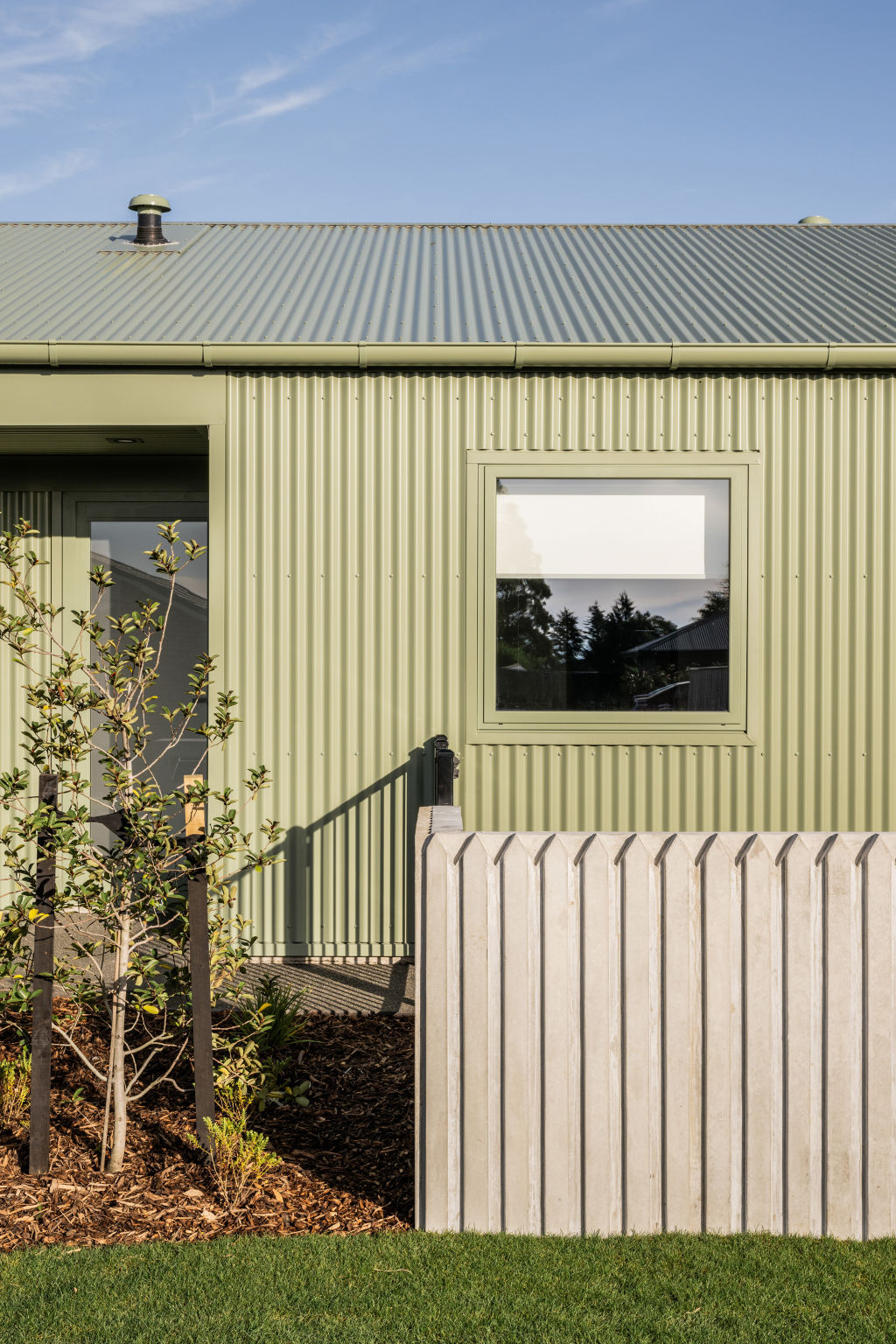
For Lucena-Orr, the innovative project prompts a “total rethink of the possibilities of urban development”.
“It sets a new precedent for this typology, highlighting colour as a cost-effective, highly impactful design strategy, which is exactly what the awards program is designed to recognise,” she says.
Visit the Dulux website to see all of the winners and finalists in the 2024 Dulux Colour Awards.
States
Capital Cities
Capital Cities - Rentals
Popular Areas
Allhomes
More
- © 2025, CoStar Group Inc.
